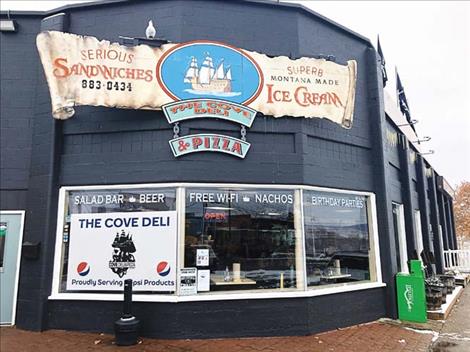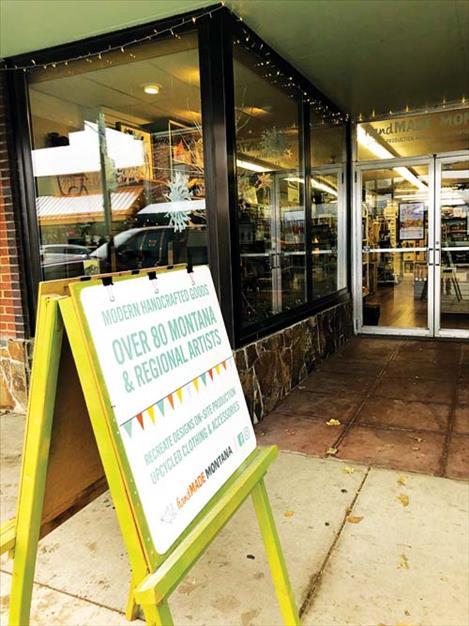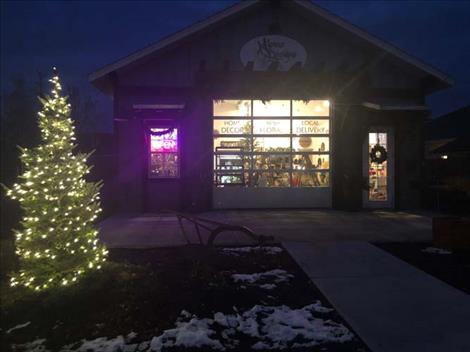Grants help spur Main Street revitalization
Hey savvy news reader! Thanks for choosing local.
You are now reading
2 of 3 free articles.
POLSON — Stroll through downtown Polson and you’re apt to notice that once vacant buildings are occupied, ramshackle facades have received a face lift, and storefronts are gleaming with a new coat of paint.
The past three years have brought a wave of new businesses and remodeling projects to Main Street, and several of these improvements were funded with help from the city’s Tax Increment Financing grants.
On a recent trek through town, Polson City Planner Kyle Roberts enumerated the projects that have been completed since the TIF grant program was established in 2018.
“When I first came here five years ago, it was sleepy – not a lot going on and empty storefronts,” Roberts said. “Now, you can walk downtown and see new businesses, revitalization and lots of positive changes.”
Major projects include $160,000 to help Polson Theatres expand its Showboat Cinemas from two screens to a state-of-the-art six-plex.
The TIF contribution helped pay for demolition, installing new sidewalks and the façade.
HandMade Montana received $18,895 for structural improvements to bring the building up to code, new flooring and removal of the old awning. The business, owned by Carol Lynn Lapotka, stands out for Roberts.
“That’s a really cool one,” he said of HandMade Montana. “Not only did they do a lot of work to the building but it also resulted in bringing a new business to town.”
A dilapidated building at 401 Main Street that had various incarnations as a gas station, boxing club and consignment store was transformed into a restoration service, 1-800 Water Damage. The $27,000 in TIF funds helped finance new garage doors and windows, an awning, concrete work and a new sidewalk.
Other projects include: Alpine Design, $8,600 to pave a parking lot in the alley behind the business; 302 Main Street, which houses Tradewinds Real Estate and several little shops that line 3rd Ave. W., received $17,500 for structural improvements, awnings and façade renovations; and the Cove building, also home to American Eye Care and G&M Auto Tech, was allocated $2,700 to pressure wash and paint the exterior.
All of these investments required a 50 percent match from the building owner or tenant. The Polson Redevelopment Agency, an advisory board to the city commission, oversees the program.
Gayle Siemers, a member and former chair of the PRA, calls TIF funding “a good tool for a community to be able to get rid of blight.” The retired dentist arrived in Polson in 1981 and recalls a thriving Main Street business district with drug stores, hardware and clothing stores, restaurants, banks and more. As with many communities, businesses closed, relocated or were vanquished by box stores.
“Communities still need a Main Street. Our culture almost demands that we have an area of gathering,” said Siemers. “Main Street is an important part of community, and Polson needs to consider what we want ours to look like.”
Polson originally established an Urban Renewal District in 1997 to address community blight: the proliferation of rundown storefronts, abandoned warehouses and empty buildings. The district lists four priority areas: Salish Point and the lakefront area, the central business district, Montana Rail Link’s old railyard south of 7th Ave., and the adjacent residential, commercial and light industrial areas.
Polson’s Urban Renewal Plan includes a provision to use Tax Increment Financing to fund redevelopment activities within the district. The funding mechanism is a little complicated. When the TIF was established, property values at 2002 levels utilized monies allocated for paying city, school district, county and state taxes. As property values rise, increases above the 2002 taxable value flow into a special fund set aside for projects within the district.
By 2010, the fund had accumulated enough to contribute $150 million to the Main Street Streetscape project. Five years later, nearly $950,000 in TIF funds helped build the walking path that meanders from Salish Point to Riverside Park, the stairs from Riverside Park up to 1st St. W. and a new city dock.
In 2018, the PRA began looking at ways to offer TIF grants to local businesses or nonprofits seeking to buy or remodel existing buildings within the district. The program offers from $7,500-$160,000 for qualifying projects, which can range from painting and restoration to technical assistance, structural improvements and infrastructure.
Benefits are twofold: “The return to the community from the substantial increase in tax value offers a pretty good payback from that investment,” said Siemers. “Plus, we don’t have a major building downtown that becomes vacant or rundown.”
He credits the enthusiasm of PRA members and guidance from Roberts and city finance officer Cindy Dooley for helping shape the grant program. “It’s been a privilege to get to work with city employees. They’ve done a very good job helping us understand what we can and cannot do.”
While TIF funding has spurred changes in downtown Polson, Siemers notes that several private investors have also rehabilitated buildings on their own. “I just want to thank all those people who have done such a nice job in improving the value and the look of our Main Street,” he said.
He points out that several of these projects may have qualified for TIF grants, but property owners probably weren’t aware of the program. He suggests anyone with a building or remodeling project within the Urban Renewal District visit the city’s website, www.cityofpolson.com. The PRA info, including a map, is located under Boards and Commissions.
Siemers’ term on the PRA expires Dec. 31, and he hopes someone will step up to serve on the board. “That’s what’s fun: when you get to live in a small community and get to work with really good people,” he said.
For more information, call City Hall at 406-883-8200 or reach out to Siemers, board chair Karen Dunwell or members Molly Owen, Brodie Moll or Sheldon Ekland-Olson.





















